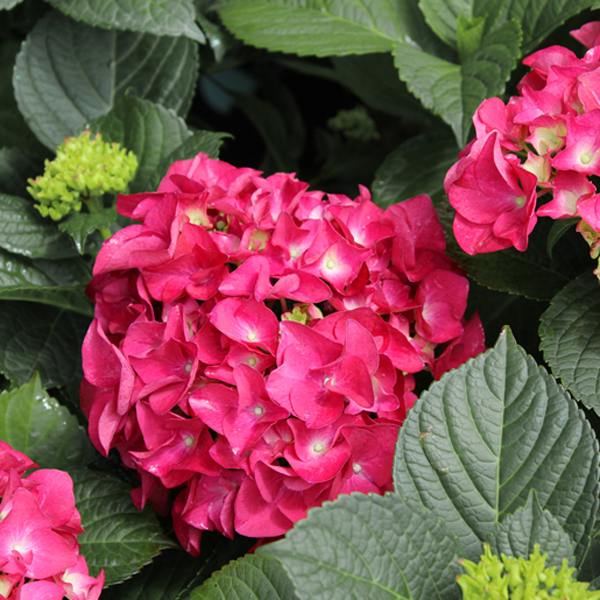
Hydrangea macrophylla, or Mophead Hydrangea, are the stalwart showstoppers of the summer garden. Nowadays you’ll find them in pink, blue, white, lavender, and even lime green! One of our favorites is Endless Summer, which keeps popping out blooms all through the sultry days of July and August. Since the introduction of Endless Summer many other varieties have been bred to offer continual blooms on new wood as well. That being said even these varieties can be unreliable at times.
But what if your hydrangea is apparently a dud? There are a couple of possible reasons your macrophylla might be holding out on you.
One of the most common reasons we see mopheads refuse to bloom is because a well-meaning gardener pruned them incorrectly. We know how it goes: you couldn’t stand looking at those bare stalks this past winter and so you cut them sometime between November & June. The thing is, macrophylla bud and bloom on that old growth, and if you snipped them off or damaged the ends of the stalks you may have also nixed all the flowers for the year. Just hold out till early summer next year and you’ll see them come back.
Another reason for the lack of blooms is the weather, more specifically the temperature swings throughout the winter. Winters in New England vary from region to region. In February you could have a 45 degree day and a 25 degree night. Those warm days move sugars up the stems from the roots and then the cold nights can freeze the same stems and flower buds which kills off the potential to flower. Locations closer to a body of water, like Cape Cod, can have on average a 10 degree difference between the day and nighttime temperatures which doesn’t cause as much winter dieback to those flower buds. That is why they seem to be more floriferous then the Hydrangeas located more inland.
Come spring you’ll notice that new growth is coming in from the base of the plant. They’ll be back to full glory in a year or so, with some kinder weather and TLC. In the meantime break the rule in #1 and go ahead and trim back any old stalks that haven’t budded by now. Here’s how.
If you are still frustrated with lack of blooms maybe plant a Smooth, Panicle or Mountain Hydrangea. These varieties will be more reliable bloomers.
Would you like to learn more about caring for your hydrangeas? Here’s a fantastic resource from Proven Winners that covers all the basics.
Fullscreen Mode








